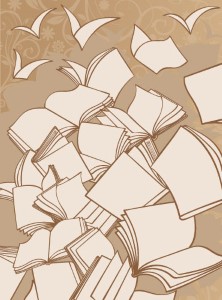Strong opinions
О книге
Аннотация
- ACKNOWLEDGMENTS
- FOREWORD
- STRONG OPINIONS. INTERVIEWS
- 1
- 2
- 3
- 4
- 5
- 6
- 7
- 8
- 9
- 10
- 11
- 12
- 13
- 14
- 15
- 16
- 17
- 18
- 19
- 20
- 21
- 22
- LETTERS TO EDITORS
- TO THE EDITOR OF PLAYBOY
- 2- TO THE EDITOR OF THE LONDON TIMES
- 3 TO THE EDITOR OF ENCOUNTER
- 4 TO THE EDITOR OF THE SUNDAY
- 5 TO THE EDITOR OF ENCOUNTER
- 6 TO THE EDITOR OF THE NEW STATESMAN
- 7
- 8
- 9 TO THE EDITOR OF Time MAGAZINE
- 10 TO JOHN LEONARD, ЕDITOR OF THE NEW YORK TIMES BOOK REVIEW
- 11 TO JOHN LEONARD, EDITOR OF THE NEW YORK TIMES BOOK REVIEW
- ARTICLES
- ON HODASEV1CH
- SARTRE'S FIRST TRY
- POUNDING THE CLAVICHORD
- A REPLY TO MY CRITICS
- LOLITA AND MR. GIRODIAS
- ON ADAPTATION
- 7. ANNIVERSARY NOTES
- INSPIRATION
- LEPIDOPTERA PAPERS
- THE FEMALE OF LYCAEIDES SUBLIVENS NAB.*
- ON SOME INACCURACIES IN KLOTS' FIELD GUIDE
- BUTTERFLY COLLECTING IN WYOMING, 1952
- AUDUBON'S BUTTERFLIES. MOTHS
- L. C. HIGGINS AND N. D. RILEY
- Books by Vladimir Nabokov
Скачать или читать онлайн книгу Strong opinions
На этой странице свободной электронной библиотеки fb2.top любой посетитель может читать онлайн бесплатно полную версию книги «Strong opinions» или скачать fb2 файл книги на свой смартфон или компьютер и читать её с помощью любой современной книжной читалки. Книга написана автором Владимир Владимирович Набоков, относится к жанру Классическая проза, добавлена в библиотеку 20.12.2011 и доступна полностью, абсолютно бесплатно и без регистрации.
С произведением «Strong opinions» , занимающим объем 268 печатных страниц, вы наверняка проведете не один увлекательный вечер. В нашей онлайн читалке предусмотрен ночной режим чтения, который отлично подойдет для тёмного времени суток и чтения перед сном. Помимо этого, конечно же, можно читать «Strong opinions» полностью в классическом режиме или же скачать всю книгу целиком на свой смартфон в удобном формате fb2. Желаем увлекательного чтения!
С этой книгой читают:
- Защита Лужина - Владимир Набоков
- Изобретение Вальса - Владимир Набоков
- Другие берега - Владимир Набоков
- На чужих берегах. В поисках потерянного рая - Владимир Набоков
- Рождественские истории - Владимир Набоков
- Избранное - Дежё Костолани
- Загадочная история Бенджамина Баттона (Сборник) - Фрэнсис Фицджеральд
- Раковый корпус - Александр Солженицын
- Прекрасные и проклятые - Фрэнсис Фицджеральд
- Собрание сочинений в трех томах. Том третий - Оскар Уайлд


 Книжный Вестник
Книжный Вестник Поиск книг
Поиск книг Любовные романы
Любовные романы Саморазвитие
Саморазвитие Детективы
Детективы Фантастика
Фантастика Классика
Классика ВКОНТАКТЕ
ВКОНТАКТЕ